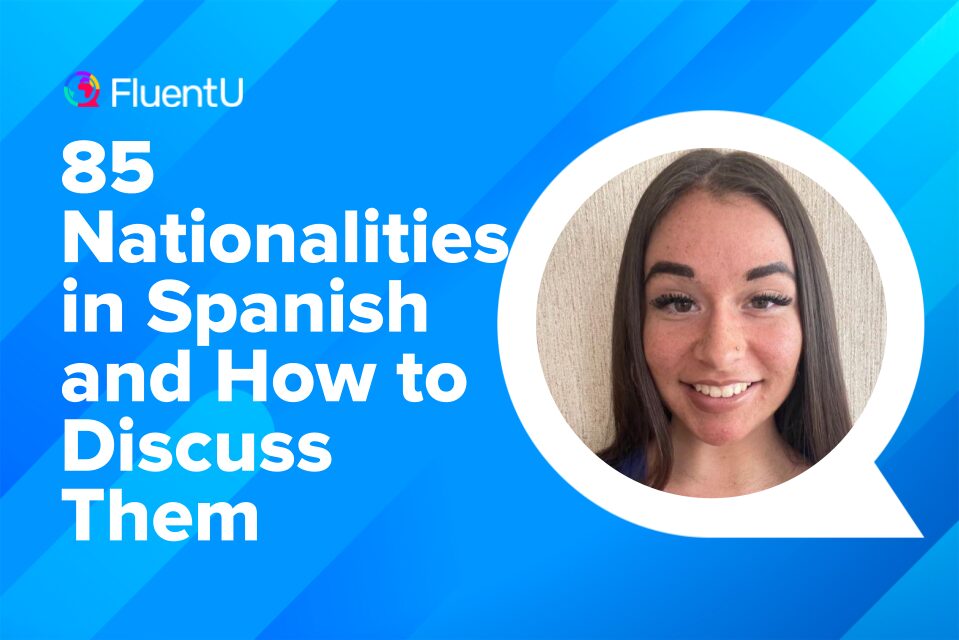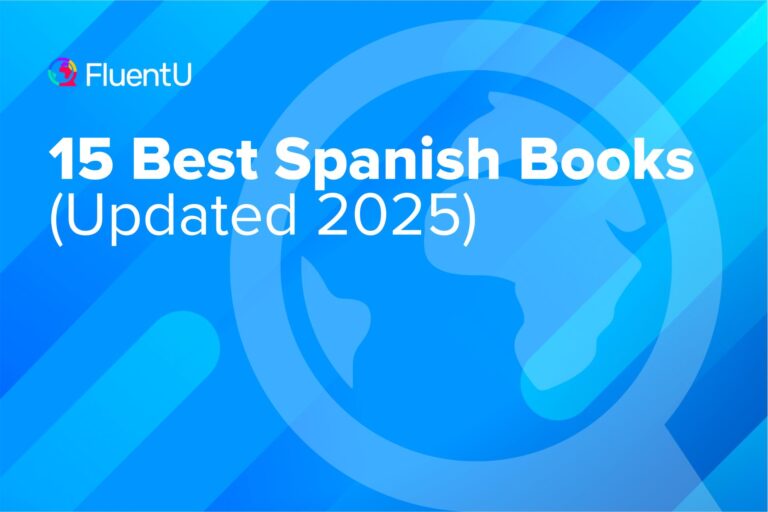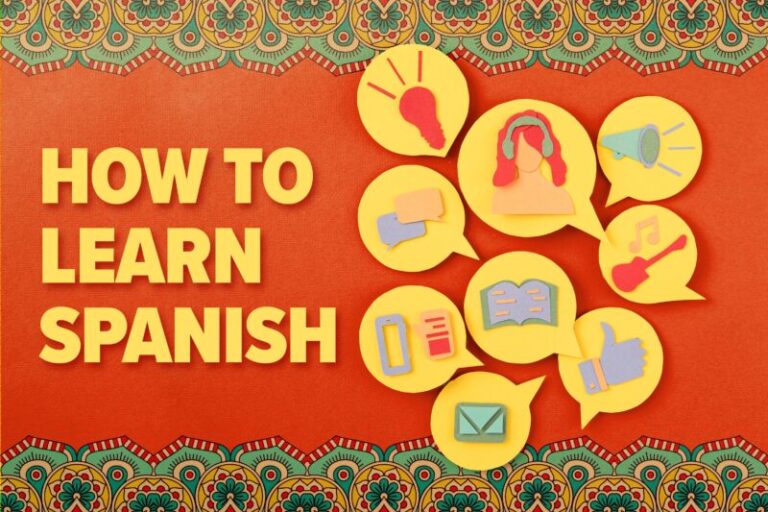Contents
85 Nationalities in Spanish and How to Discuss Them

Learning how to talk about nationalities in Spanish is important if you want to connect with people from different countries. Spanish uses specific rules for nationalities as adjectives and nouns, and these words must match gender and number—while also following unique capitalization conventions.
Below we’ve compiled a list of over 85 nationalities in Spanish, along with practical tips and example sentences to help you use them confidently in conversation.
Download: This blog post is available as a convenient and portable PDF that you can take anywhere. Click here to get a copy. (Download)
Nationalities in Spanish
Where applicable, we’ve provided both the masculine and feminine forms of the word. As you’ll see, some nationalities only have one form for both masculine and feminine nouns (more on this later).
To talk about someone who has multiple nationalities, you can just say them both as you would in English. For example:
Mi madre es francesa-japonesa. (My mother is French-Japanese.)
If the person is approximately 50% of each nationality, you can say, for example:
Soy mitad colombiano y mitad chileno. (I’m half Colombian and half Chilean.)
How to Use Nationalities in Spanish
Let’s take a look at a few rules you need to keep in mind when discussing nationalities in Spanish.
Nationalities can be nouns or adjectives
Like in English, nationalities in Spanish can be used as a noun or an adjective. Here are a couple of examples as an adjective:
Mi abuelo es mexicano.
(My grandfather is Mexican.)
Soy estadounidense.
(I’m American.)
And as a noun:
Muchos mexicanos viven en Texas.
(A lot of Mexicans live in Texas.)
Hay un estadounidense en mi clase.
(There’s an American in my class.)
When referring to a general group of people of the same nationality, you use the masculine plural form, unless it’s specifically a group of females.
Nationalities must match gender and number
When used as adjectives, nationalities follow the same rules as other Spanish adjectives—they have to match the gender of the noun they describe and use the plural form (usually adding -s or -es) when talking about more than one person, place or thing.
For example:
• Singular, masculine: un científico noruego
(a Norwegian scientist)
• Singular, feminine: la comida china
(Chinese food)
• Plural, masculine: los carros alemanes
(German cars)
• Plural, feminine: las mujeres brasileñas
(Brazilian women)
Some nationalities are gender-neutral. They typically end in an -e (i.e., estadounidense, etíope), -i (i.e., iraquí, israelí), or -a (i.e., belga, croata). These stay the same for masculine and feminine nouns. For example:
El chico es costarricense.
(The boy is Costa Rican.)
La chica es costarricense.
(The girl is Costa Rican.)
Nationalities in Spanish aren’t capitalized
Unlike in English, we don’t capitalize the first letter of nationalities in Spanish. We do, however, always capitalize the name of a country.
For example:
Soy de Canadá. Soy canadiense.
(I’m from Canada. I’m Canadian.)
El chico es de Italia. Es italiano.
(The boy is from Italy. He’s Italian.)
Check out this article for more Spanish capitalization rules.
Phrases for Talking About Nationalities in Spanish
When talking about nationalities, knowing some relevant words and phrases will come in handy. Be sure to master these to make your conversations flow much smoother!
• ¿De dónde eres?
— Where are you from? (informal)
• ¿De dónde es?
— Where are you from? (formal)
• ¿De qué país eres?
— Which country are you from? (informal)
• ¿De qué país es?
— Which country are you from? (formal)
• ¿Cuál es tu nacionalidad?
— What’s your nationality? (informal)
• ¿Cuál es su nacionalidad?
— What’s your nationality? (formal)
• Ser de… — To be from…
Soy de…
— I’m from…
Somos de…
— We’re from…
Es de…
— He’s/She’s from…
Son de…
— They’re from…
Here’s an example dialogue to show you how nationalities are used in Spanish in the context of a casual conversation:
Marcos: Hola, ¿qué tal? (Hey, how are you?)
Emma: Todo bien, ¿y tú? (All good, and you?)
Nico: Excelente. Hablas bien el español. ¿De dónde eres? (Excellent. You speak Spanish well. Where are you from?)
Emma: Soy de Alemania. (I’m from Germany.)
Nico: ¡Ah, los alemanes son buenos para los idiomas! (Ah, Germans are good with languages!)
Emma: ¿Y tú? ¿De dónde eres? (And you? Where are you from?)
Nico: Soy de Ecuador. (I’m from Ecuador.)
Emma: En serio? Mi mejor amiga es ecuatoriana. (Really? My best friend is Ecuadorian.)
Nico: ¡Los ecuatorianos somos los mejores! (Ecuadorians are the best!)
How to Memorize Nationalities in Spanish
If you want to master talking about different nationalities in Spanish, the best way to do so is by immersing yourself in the language so you can hear them discussed by native speakers in authentic environments.
One way to do this is by looking for movies and TV shows from or about the nationality you’re interested in. You can also search YouTube for Spanish-language street vlogging videos in a location you’re interested in.
Here’s a great video to check out from Easy Spanish, which is a street vlog that’s meant for learners but still uses natural speech:
Another option is FluentU, which combines high-quality authentic videos with learning tools.
FluentU takes authentic videos—like music videos, movie trailers, news and inspiring talks—and turns them into personalized language learning lessons.
You can try FluentU for free for 2 weeks. Check out the website or download the iOS app or Android app.
P.S. Click here to take advantage of our current sale! (Expires at the end of this month)

Bookmark this one-stop guide to talking about nationalities in Spanish and come back to it whenever you need a review.
You’ll soon be talking about people and things from all over the world with confidence and ease!
And One More Thing…
If you've made it this far that means you probably enjoy learning Spanish with engaging material and will then love FluentU.
Other sites use scripted content. FluentU uses a natural approach that helps you ease into the Spanish language and culture over time. You’ll learn Spanish as it’s actually spoken by real people.
FluentU has a wide variety of videos, as you can see here:

FluentU brings native videos within reach with interactive transcripts. You can tap on any word to look it up instantly. Every definition has examples that have been written to help you understand how the word is used. If you see an interesting word you don’t know, you can add it to a vocab list.

Review a complete interactive transcript under the Dialogue tab, and find words and phrases listed under Vocab.

Learn all the vocabulary in any video with FluentU’s robust learning engine. Swipe left or right to see more examples of the word you’re on.

The best part is that FluentU keeps track of the vocabulary that you’re learning, and gives you extra practice with difficult words. It'll even remind you when it’s time to review what you’ve learned. Every learner has a truly personalized experience, even if they’re learning with the same video.
Start using the FluentU website on your computer or tablet or, better yet, download the FluentU app from the iTunes or Google Play store. Click here to take advantage of our current sale! (Expires at the end of this month.)







